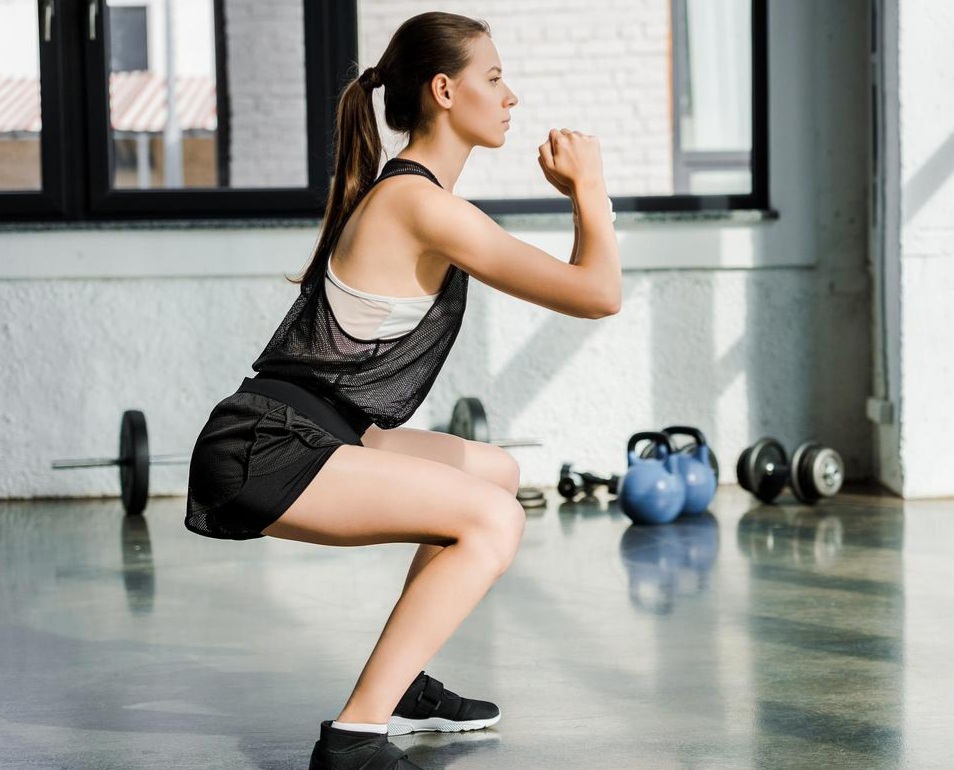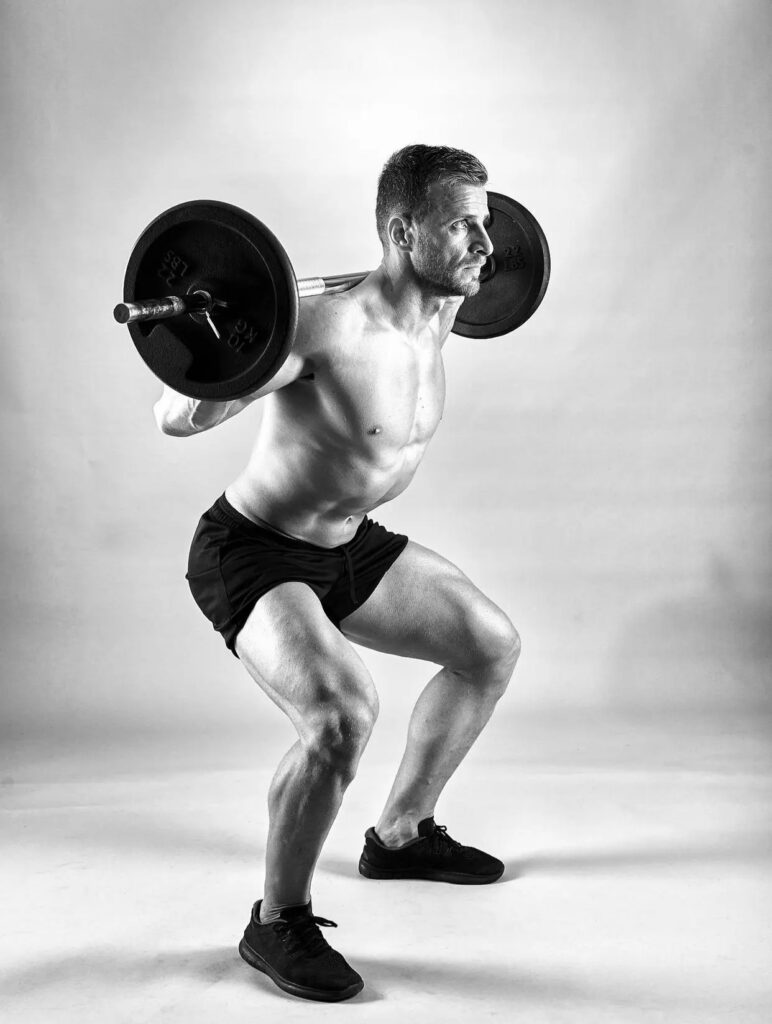Among the various movement controversies in strength training, the squat (mainly referring to the barbell squat) is probably the most controversial movement. Some people think that it is “the king’s action”, and the benefits of exercise are self-evident. But some people, especially some medical professionals, strongly criticize the “harm” caused by squatting to the knee joint. What is right and what is wrong? What are the benefits of doing more squats

What are the benefits of practicing squats?
(1) Squatting exercises, first of all, it can obviously increase the muscle strength of the exerciser’s buttocks and legs, and increasing the weight can increase the circumference of the buttocks and legs muscles. In traditional martial arts, the stability of the lower body is emphasized very much, and exercises such as step are very common, and the importance of lower body strength is also emphasized in fitness. Since the legs are an important guarantee of physical strength, when the strength of the legs is large enough, it is more conducive to the exertion of various movements.
(2) Among the fitness crowd, there is also a popular saying “If you don’t exercise your legs during fitness, you will regret it sooner or later.” The public expression of this sentence is that “squatting is beneficial to increase the testosterone level of men”, which is also referred to as “promoting testosterone”, because the level of testosterone directly affects the effect of muscle building.
Another layer of implicit expression is that not practicing squats may affect male sexual performance. The truth, however, is that studies have shown that strength training alone can have an impact on testosterone levels in men. As for how much it affects, it has a lot to do with the training level of the iron lifter (the recruitment ability of muscle force units, training volume, training intensity, etc.). It can be said that squatting has nothing to do with male sexual ability, but high-quality weight-bearing squat training can promote the improvement of testosterone levels, which is conducive to the further improvement of muscle growth and strength training levels.
(3) Although the weight-bearing squat belongs to strength training, it can also achieve a good weight loss effect. Many strength trainers are afraid to work out their legs because they are too tiring. It’s a strong cardio-stimulating effect, and it also makes exercisers more prone to fatigue, and delayed-onset muscle soreness tends to be more pronounced afterwards than with other exercises. But an hour of high-quality squat-based leg training can burn a lot of calories. If it can be combined with diet control, it can play a very good weight loss effect.
(4) The barbell squat is a compound movement. It not only exercises the hip and leg muscles, but also exercises the abdomen, back, etc. It is also an exercise for the core strength of the waist and abdomen. Therefore, when you have become a strength trainer who can withstand heavy squatting, your waist and abdominal strength must not be bad. And long-term regular adherence to lower body training with squat-based training will definitely improve the stability of the exerciser’s body.
{5} A reasonable amount of squat training can better protect the knee joint. Because squat training enhances the muscle strength of the lower limbs, these lower limb muscles can more effectively cushion the impact of the foot landing in various sports, and can also increase the stability of the knee joint during exercise. Appropriate and correct squat training is beneficial to the penetration and absorption of nutrients into the knee joint tissue. While squatters are training normally, if they can also perform certain lower limb stretching exercises, they can further improve the flexibility of the knee joint and make the knee joint healthier.
Having said so much about the benefits of squatting for the knee joint, then, does squatting, especially heavy-duty lower body training such as barbell squatting, hurt the knee?

Knee injury, what caused it?
Friends who often go to the gym to exercise may wish to observe that those senior bodybuilders who regularly and long-term strength training practice squats and use heavy weight training more often, but there are almost no knee injuries among them. , and they rarely care about topics like “squatting hurts the knee”. Conversely, novices are more injured. What is the reason for this phenomenon?
Reason 1: wrong action.
The squat may seem like a very simple movement, but it is almost impossible for a novice to master all the technical points from the beginning. Putting too much power on your knees and bending your lower back are two of the most common mistakes. If there is no coach or experienced person to guide, correct and protect, and repeatedly train under the wrong action, the knee joint and lumbar spine are likely to be injured. The correct action itself can play a role in protecting the knee joint and lumbar spine to a large extent. point of view is that the squat itself does not hurt the knee, and the wrong action is also the primary factor that causes the knee injury.
Reason 2: Excessive training load.
Novices tend to focus their squat training on the size of the load and always want to use heavier weights. The premise of heavy-duty training is that the movement cannot be deformed, otherwise it is better to use a lighter weight, but there are not many people who can really do this, so injuries are inevitable. The reason why high-level trainers dare to use heavy weights is because there is no problem in mastering the movements, and secondly, they already have strong lower limb muscle strength for support under long-term training.
In addition, the so-called “large weight” is not a static and fixed concept, but a relatively variable quantity. For a novice, a load of 60 kg may already be the upper limit, and it is definitely a “big weight”. But for a master, 60kg might just be a warm-up weight. Even with the same trainer, the concept of heavy weights changes as the level of training increases. Adopting a weight-bearing regimen that suits your current training level is an important part of ensuring training safety.

Reason 3: Excessive training frequency and excessive training volume.
Some medical professionals discuss from the bending angle of the knee joint during squatting, and assert that squatting hurts the knee, which is actually too arbitrary. In theory, excessive training frequency and excessive training volume will indeed increase the risk of knee injury. But friends who have practiced legs will know that those who can insist on practicing legs once a week are already very remarkable. Among ordinary bodybuilders, there are very few people who practice legs twice a week. In terms of the training frequency and volume of most ordinary people, it is really difficult to cause knee injuries.
In fact, studies have found that people who are sedentary are much more likely to develop knee problems than those who live a sedentary lifestyle. The best way to protect the knee joint is to carry out various exercises including squatting scientifically, correctly and reasonably, instead of giving up food because of choking. With the right amount of squats, your knees will only get healthier!
Read more tips about health and fitness http://www.growmorehealth.com
